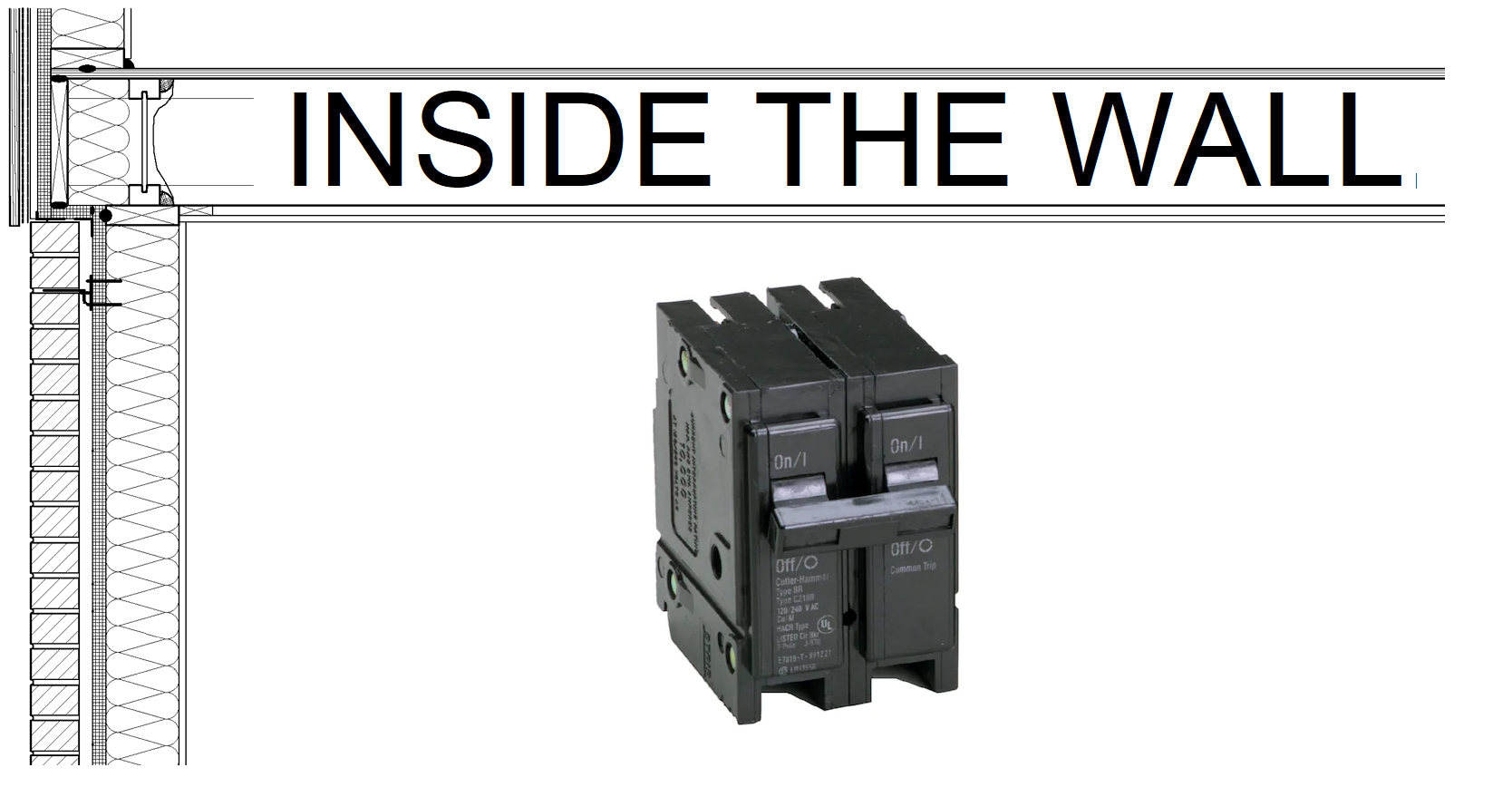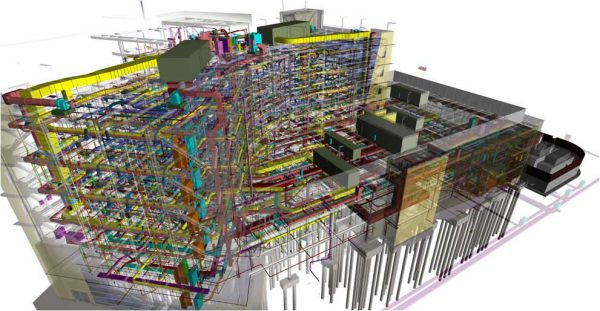In this edition of “Inside the Wall” we’ll take a look at circuit breakers. You probably have some first hand experience working with this contraption in your own home, so here’s some more information about the purpose of circuit breakers, a little history and how they get specified for a building.
The primary purpose of a circuit breaker is to protect an electrical circuit from excess current which could damage the circuit or something that has come into contact with the circuit (i.e. you). It does this by detecting a fault (in this case a higher than normal current) by sensing an increased temperature or through the magnetic effects of the excess current. Once a fault is detected, the breaker interrupts the circuit through a spring-loaded switch. This breaks the circuit and prevents further damage to the electrical system or potential injury. Once the source of the excess current has been identified and removed from the circuit, someone can reset the breaker reconnect the circuit. Prior to the introduction of circuit breakers, circuits were protected by fuses which required replacement any time it had to interrupt the circuit (a small wire inside would physically melt).
Circuit breaker design goes all the way back to Thomas Edison in 1879, but it wasn’t until after World War II that breakers began to be installed in homes and places of business. Since then, designs have continued to improve allowing for more voltages and safety features. Of course, you can also now get a “smart” circuit breaker that can be remotely controlled.
When designing a building, it is very important to specify the proper breaker for the load it will serve. A breaker type will be selected for the voltage and phase of the circuit then sized for the expected current (measured in amps) plus a safety factor. This factor typically provides and additional 25% of load before the breaker would trip. Since breakers come in standard sizes, the designed selects the next size up from the calculations which will usually add an additional margin. However, it’s important to not oversize a breaker by too much because it may not trip when needed.
At Forward Engineers, we seek to not only be a design and consulting firm but to also educate our clients about engineering technology. While doing so, we inevitably refresh our own knowledge and sometimes even learn something ourselves. If you are seeking to work with an engineering firm that is client-centered and strives to provides services that are on time, on budget and exceed expectations, please contact us. We would love to work with you on your next project!



